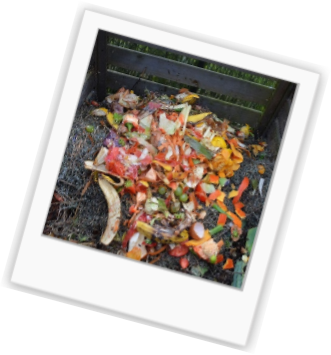How to Care for Your Very Own Worm Farm
Want to Adopt Some Dirt Dynasty Wrigglers?
Or are you planning to continue buying your worm castings from the experts and leave the dirty work to us, but you’re still curious? Read on.
Earthworms (like our African Night Crawlers) seem pretty easy going. Walking along a garden path or lifting up a rock in the forest you’ll often find them just lying there, chillin’. Actually, they can be a bit fussy. Worms do not enjoy excessive heat and freezing temperatures and are also afraid of light. And contrary to the schoolyard rumor, you cannot cut a worm in half and watch it multiply.
Another fun fact is they eat half their own body weight, every single day! Do you know what you would have to eat in order to accomplish that? It would be quite a sickening task. Let’s say you weigh 130 pounds. You would have to consume 65 pounds of food throughout the day. What would that amount look like to us? A person would have to consume 66 hotdogs, 81 apples and 5 gallons of ice cream to match the worm’s digestive abilities!
The Basics of Worm Care
Here is the short-version of what these wiggly fellas’ need.
- Protect them from excessive heat and freezing temperatures. They can survive between 33 and 90 degrees Fahrenheit, but their ideal thriving conditions are between 50 and 70 degrees.
- Make sure your worms have proper moisture levels in their environment. They like things to be damp and dewy but they can drown in too much water. You may have come upon a worm floating in a puddle a time or two before.
- They need their soil to be damp, but not sopping wet, because they breathe through their skin and require adequate oxygen.
Worm Hotel Party
Worms are non-migratory if properly cared for. If you don’t want them to pack their tiny annelid suitcases and start scooching away, these are their preferred digs:
1. Find or build a wide, shallow wooden bin that has air holes in the bottom and low sides for ventilation.
2. Since worms dislike sunlight, they will need to be covered.
3. Put a layer of black plastic (with air holes cut into it) over the top of them as well to protect from predators like birds, rodents, and toads.
4. Worm bedding. Shredded paper and leaves from the yard are ideal. Worms can also help protect you from identity theft by composting your shredded office paper and secure documents. Dampen the paper by dunking it in water but wring it out a bit so that it isn’t sopping wet. Then pull it apart here and there to create air pockets and passageways for the garden buddies to travel through.
5. Finally, throw in a couple handfuls of dirt and leaves to mix in some good bacteria and grit. Worms are similar to birds in their digestion; they have gizzards that require grit to aid in grinding up food. Soil and abrasive organic waste like coffee grounds can help with this process.
6. Location, location! Where to put this newly built Worm Hotel? Anywhere safe from animals and extreme temperatures suits them fine. For cold weather environments, a basement, patio that stays warm enough, or even the kitchen works just as well as outside during the fair weather seasons. If their environment is healthy, the decomposing food will not smell or attract flies.
7. After you have built their new house and sorted out their bed, then the worms are ready to move in. They need a couple of days to get used to their new home before you feed them, but after that, go for it. If you have one pound of worms, you can feed them a half-pound of organic waste every day. Think about how much compost you produce and therefore how many pounds of worms you will need.
Become a Worm's Personal Chef
What do you feed them? Are they gluten-free? Vegan? Do they eat dessert?
They are essentially vegan, with the exception of egg shells. If they are washed and ground up a bit, then they are a great source of calcium. Worms are not gluten-free, but do prefer food as it came out of the ground. So, no dessert, thank you, they will have the paper and coffee grounds instead.
 Good Snacks for Earthworms
Good Snacks for Earthworms
- Coffee grounds and filters
- Tea leaves and bags
- Non-acidic fruit and vegetables peels and cores
- Paper
- Rice
- Grits
- Natural fabrics like cotton
- Eggshells, washed and ground
- Leafy greens are a favorite
- Potatoes
No Thanks (Worms Will NOT Eat These)
- Butter and oil
- Salad with dressing
- Eggs yolks and whites
- Meat
- Acidic fruits like lemons, limes, oranges and tomatoes
- Hot peppers
- Salt
- Animal waste
- Plastic and synthetic materials
- Insecticides
How Do You Know They’re Healthy?
After you are all set up and you start to feed these little guys, how do you know all is well?
- If the bin starts to smell then you are either feeding them too much (only half their body weight, jeez) or you are not burying the food properly under their bedding. A healthy bin does not smell or attract flies.
- They will start to reproduce. Your worm population should double in size every three months or so. If they become too populous, give them away to the neighbors for their gardens or use them for bait. Reconsider just setting them free though. In certain areas they can do damage where they are not native, eating valuable ground cover that supports a different kind of ecosystem.
Maneuver the Manure
Sifting your vermicompost is simple but time-consuming. The good stuff, called worm castings, will gather at the bottom of the bin.
To collect the castings, feed your worms heavily on one side of the bin, toward the top, and then wait for about a week. The worms will be attracted to the food and find their way over.
Then move the bedding from the opposite side of where the worms are feasting and start gathering the compost while they’re busy eating.
Attaching mid-size chicken wire to a wooden frame is a good sifting tool, but you can also use a colander or other screen-type material.
Place your sifting device over an empty container and use the screen to separate the castings from the worms and other large pieces of organic material left behind. Throw remaining worms and matter into the bin.
What you have left over is your “black gold” fertilizer: highly-concentrated, nutrient-rich, and way more effective than chemical or synthetic fertilizer.

